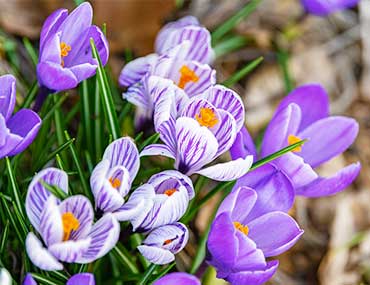By Sabrina Chiefari, Creation Care Animator
It’s the last day of March 2023 and the perfect opportunity to re-cap all of the good news that has happened over the last few months.
That’s quite the provocative statement, “good news”, isn’t it? No matter what our main source of information is, horrendous news never ceases to reach us. Whether it’s the violent carnage caused by war in Ukraine or mass shootings in the States, or heart-stopping natural disasters like last month’s earthquakes in Turkey and Syria, or the deadly climate-change fueled weather events like Cyclone Freddy or Mississippi tornadoes, the tragedy doesn’t seem to ever end.
In the spirit of a Lenten reflection series entitled “Finding God in the Chaos”, here are some “good news” stories for creation care and climate change:

Climate change
Back in November, COP27 finally saw commitments for a new funding arrangement on loss & damage for countries most affected by climate change. Though still lacking teeth regarding the continued harm of fossil fuel consumption, climate change advocates got enough from COP27 to keep pushing their own countries for more ambitious goals.
Climate change policy makers were given an invaluable tool earlier this month, with the release of the Synthesis Report from the IPCC’s Sixth Assessment Report. Although the urgency of addressing climate change remains dire, the IPCC has still highlighted what countries can tackle in a clear and actionable way.
Just a few days ago the International Court of Justice (ICJ) adopted a resolution, brought to them by Vanuatu, to hold countries who contribute the most to climate change legally accountable to countries that are affected the most by climate change. Where the Paris Agreement and Glasgow Climate Pact are, mainly, international agreements regarding greenhouse-gas emissions reduction, this is the first legal framework for climate change at the international level. This means that climate justice can now, formally, be meted out at the ICJ.
The Fossil Fuel Non-Proliferation Treaty (FFNPT) is also signed by Vanuatu, and Joint Ecological Ministry (JEM) hosted the FFNPT Chair, Tzeporah Berman, to help us learn more about it. In that same webinar, available here, Louise Romain introduced us to the Stop Ecocide movement.
Biodiversity
Many of the same advocates who were in Sharm El-Sheik for COP27 scooted right over to Montreal in December for the final gathering of COP15, where biodiversity was the main focus. Though also vulnerable to weak commitments, COP15 did reach the overall agreement to halt and reverse biodiversity loss by 2030. While there as a delegate, I had the privilege of meeting faith-based organizations who had a formal presence in the main conference space. Faiths at COP15 had the opportunity to intimately share with negotiators and advocates why biodiversity loss and conservation were so important in the context of faith traditions. As noted by Gopal Patel, “Given the immense potential of faith communities to mobilize people at local levels, we are uniquely positioned to play a leading role in creating a nature positive world where all life flourishes.”
Bringing it closer to home, Citizens for Public Justice (CPJ) and For the Love of Creation (FLC) recently hosted this conversation on Biodiversity and Creation Care in Canada.
Water
This year’s World Water Day theme was “Accelerating Change”, symbolized by a colourful hummingbird with water droplets falling from its bill. Though only a 3 day gathering, this year’s World Water Day also marked the beginning of the first UN Water Conference in over 40 years. The resulting Water Action Agenda is still being finalized, but there is renewed recognition at the international level to increase access to drinking water services, mitigate water scarcity, and respond to water-related natural disasters. In this ongoing Water Action Decade, an emphasis was made to underscore the importance of international cooperation.
Dukdukdiya
The hummingbird image used for World Water Day was based on a parable of the Quechua people in Peru. Dukdukdiya is a hummingbird who tirelessly works to douse a raging forest fire, by brining water one drop at a time with her tiny bill from a nearby lake. In doing what she could, l’m reminded of the webinar I participated in during World Interfaith Harmony Week. “Faith Perspectives on Ecological Justice” was an opportunity for different Canadian, faith-based, climate & ecological justice professionals to share their work with Canadian environmental non-government organizations (ENGOs). Generously hosted by Sustainability Network, this proved to be a meaningful moment of solidarity and fellowship among those who do what they can to care for the Earth.
Finally, the title of this blog is inspired by this 3-year-old Italian video, loosely translated as “What colours will you choose for the city of your dreams?”. Though entirely in Italian, it’s easy to understand what it’s getting at. The gist of it is this: Parents are given unopened boxes of crayons to colour-in outlines of Milan, vertical parks, beloved landmarks, etc. Then, their children are similarly tasked using the very same boxes of crayons. The result? While the parents’ creations are vivid, bright, and eye-catching, the children’s are dark, grim, and gloomy. At the end, one parent remarks “we have to leave them a little bit of green, at least”. It’s obvious, as we end one month and begin another, that chaos hasn’t ended, but some colour is being put back in our box of crayons.
Sign-up here for the Journey for Justice newsletter – Next issue coming April 19!
Sign-up here for the Journey for Justice newsletter – Next issue coming April 19!
